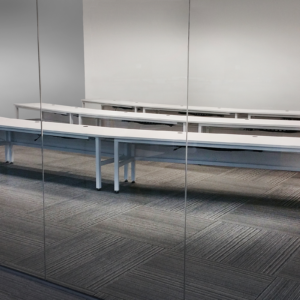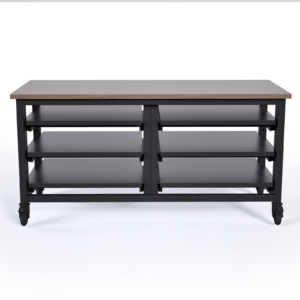What are the latest developments affecting the furniture manufacturing market?
We take a look at the 10 most important trends that will drive the industry forward in 2021.
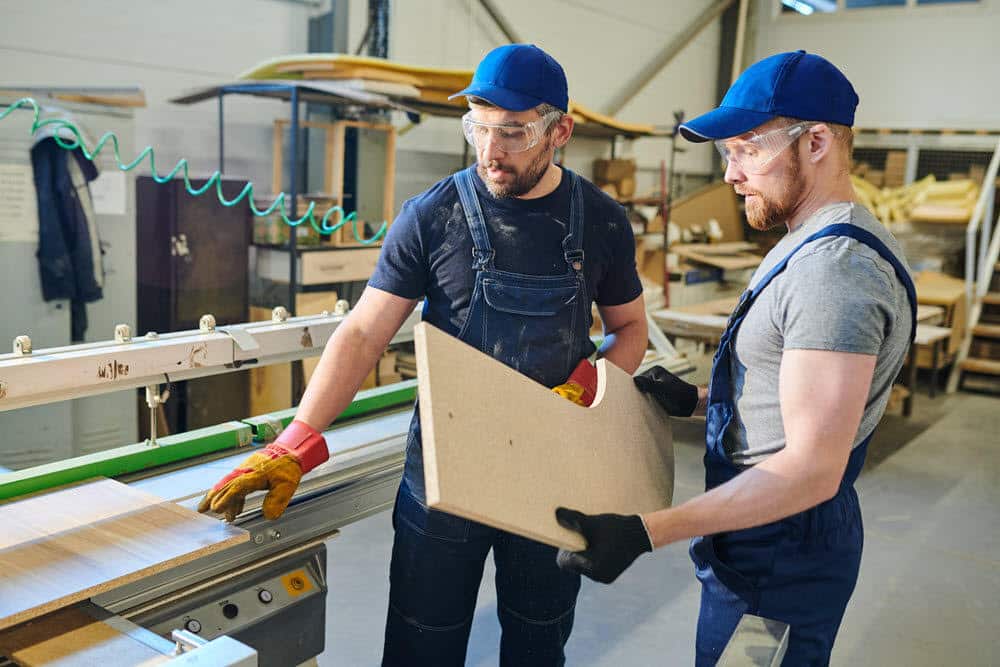
Trend 1: Office Furniture Sales Shift away from Traditional Office Lines to meet Demand for Work from Home (WFH) and Residential-Oriented Products
The Coronavirus pandemic hit the $12.5 billion office furniture business especially hard in the past year as many office customers shut their doors in favor of allowing their employees to Work from Home (WFH).
Not all furniture market segments suffered as much of a downturn as office furniture, however; for example, laboratory furniture sales have maintained momentum thanks to increased investment in biotech research and clinical testing laboratories.
But the big breakout sales star has been residential-oriented furniture products, as employees upgraded their home office environments to make them more productive and functional, and renovated their living quarters (including outdoor areas) to make them a more comfortable environment for enjoying many months of “lockdown.”
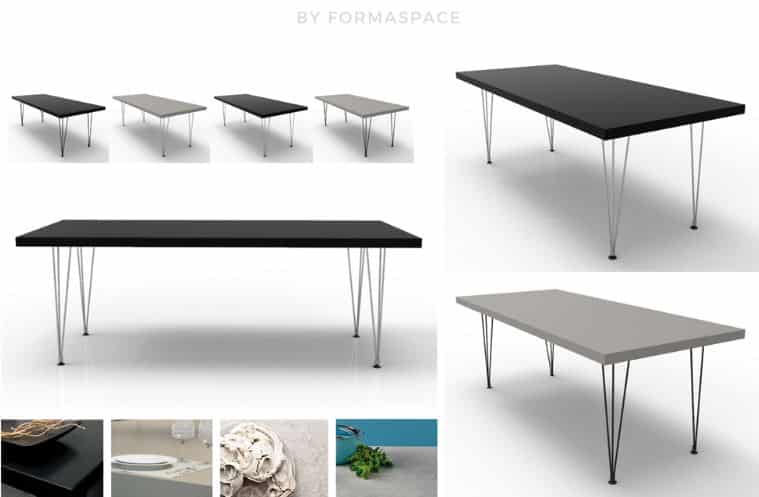
Analysts at Quintana Research and Consulting predict the global home office furniture market segment will see compound annual growth rates (CAGR) of around 7.5% during 2020-2026 – which points to the long-lasting impact of the WFH trend.
Trend 2: E-Commerce Sales Take Off as Augmented Reality and Visualization Tools Assist in Furniture Product Personalization and Purchasing Decision
According to Statistica, e-commerce revenue will reach $2.7 trillion in 2021, with the average user spending just over $700 annually.
Overall, E-commerce CAGR is projected to increase by 6.29% between now and 2025. And user penetration will also grow substantially – from an estimated 50.8% of shoppers using e-commerce today to more than 63% by 2025.
Many analysts point to the Coronavirus lockdown over the past year as one of the reasons major e-commerce giants have grown so spectacularly over the past year – Amazon’s revenue is nearing $400 billion, Walmart’s revenue (including physical store sales) is north of $550 billion, and Ikea’s parent holding company reports revenue of over $45 billion.

The rapid update of e-commerce sales in the home furnishings market is causing quite a few retail companies to restructure their operations.
For example, at Williams Sonoma (whose customer-facing brands include Williams Sonoma, Pottery Barn, and West Elm), president and CEO Laura Alber recently announced in an earnings conference call that “E-commerce accelerated sequentially to a record net comp of over 49%, and we were pleased to see our store performance improved throughout the quarter to a net negative 11% comp. Even more encouraging is the retail demand comp at negative 4%.”
In plain English, Alber is saying that while e-commerce is booming, physical store sales are down, albeit not as bad as before. Julie Whalen, William Sonoma’s CFO, admits this means more restructuring is in the offing: “Our plan, currently, is to close approximately 40 stores this year. Stores continue to be a competitive advantage as people like to see merchandise in-person. However, we are anticipating a future with fewer, better, more profitable stores.”
For a long time, the common consensus was that furniture sales were incompatible with e-commerce. Analysts believed that consumers wanted to physically touch and handle furniture products before making a purchasing decision.
However, conditions are changing.
First, more “digital native” Millennial and Gen Z customers are now “decision-makers”, a cohort that is much more comfortable shopping online for all kinds of products, including furniture, fashion, and prescription eyeglasses, that were once thought to be unsuitable for e-commerce first sales.
The second factor that’s changed is the rise of personalization.
Today’s consumers want choice, and the newest online sales tools allow them to visualize and personalize their furniture purchases before placing an order.
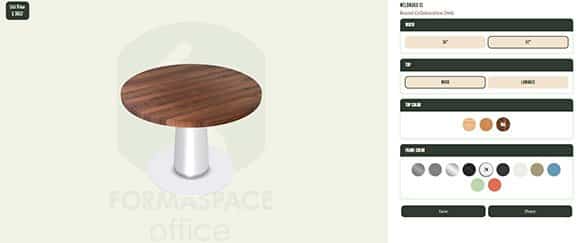
Custom photorealistic visualization tools let consumers evaluate material choices (including metal and wood materials, fabrics, surface treatments, and color choices) as well as provide the ability to personalize furniture designs (with elements such as custom storage components, built-in lighting, phone charging pads, or hidden power and data connections) before making a final purchase.
Augmented reality (AR) tools are another factor that’s helping fuel the growth in online furniture sales. Sophisticated AR tools help consumers see exactly what their furniture will look like in their home environment by matching 3D images of furniture with live video captured by their handheld smartphones.
Trend 3: Race to Renovate and Update Office Furnishings and Layouts to make Working in the Office More Attractive to Employees
The success of Coronavirus vaccines from Moderna and Pfizer in preventing serious illness (as well as inhibiting the spread of the virus by those who have been vaccinated) is leading many business executives to draw up plans for workers to once again return to the office.
For example, Microsoft recently published an extensive analysis of the pros and cons of Working from Home (WFH) that’s well worth reading; it goes a long way to explain why they have reopened their offices worldwide as part of a new post-Covid hybrid work program.
| 1 | Flexible work is here to stay |
| 2 | Leaders are out of touch with employees and need a wake-up call |
| 3 | High productivity is masking an exhausted workforce |
| 4 | Gen Z is at risk and will need to be re-energized |
| 5 | Shrinking networks are endangering innovation |
| 6 | Authenticity will spur productivity and wellbeing |
| 7 | Talent is everywhere in a hybrid work world |
Key Points of Microsoft Predictions for the Future of Work, including Work from Home (WFH) and Hybrid Home/Office Work Scenarios
But just announcing that the office is reopening may not be sufficient to lure WFH workers back.
As we invite employees to return to the office, we need to rebuild confidence and create a compelling reason for workers to return – e.g. an attractive environment where people look forward to coming into the office.
That’s why many companies (Formaspace included) are currently undertaking major office renovations that will make the office environment feel safer and more productive for returning workers – as well as supporting those who will continue to work part-time from home.
Trend 4: Using Accessory Mods and Furniture Hacks to Increase Space Separating Workers in the Office – without Creating Dark, Claustrophobic Environments
The Coronavirus pandemic has dramatically changed our perceptions of what is “safe” and “appropriate” in office design.
And safety measures that seemed acceptable in 2020, such as applying brightly colored tape to “blank out” every other desk or seat to create more space between people, no longer seem appropriate.
Instead, the new trend is to update (or even redesign) office environments with new furniture modules that convey a sense of personal physical space and privacy – but without creating dark, claustrophobic environments.
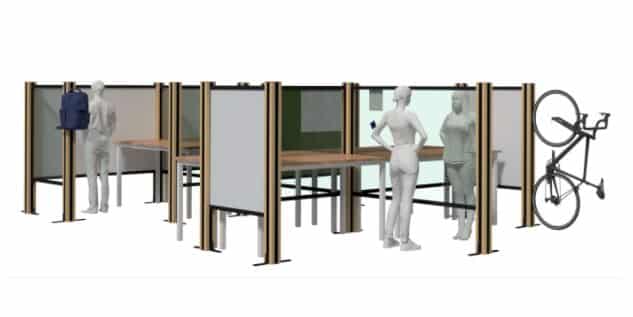
The bottom line?
Translucent materials have emerged as a key design element in new office design.
When properly designed into new furniture systems, translucent panels lose that “temporary emergency” look-and-feel and instead create a visually attractive, modern environment that is open yet feels safe.
Trend 5: Work From Anywhere (WFA) Drives Demand for Non-Traditional Indoor / Outdoor Furniture for use in Casual Meeting Spaces and Ad Hoc Work Environments
During the Coronavirus lockdown, most of us discovered the benefits of spending more time outdoors, including during work hours.
As a result, the idea of “work from anywhere” (WFA) is no longer limited to those hard-core road warriors hogging coveted tables next to electrical outlets at the local Starbucks.
It’s become a mainstream trend.
Today, people are seeking out pleasant spots from which to work, whether at a local outdoor café, newly renovated backyard patios with high-end indoor/outdoor furniture, or even from new custom-built “office sheds” located in the backyard that provide a quiet, private work area away from noisy household distractions.
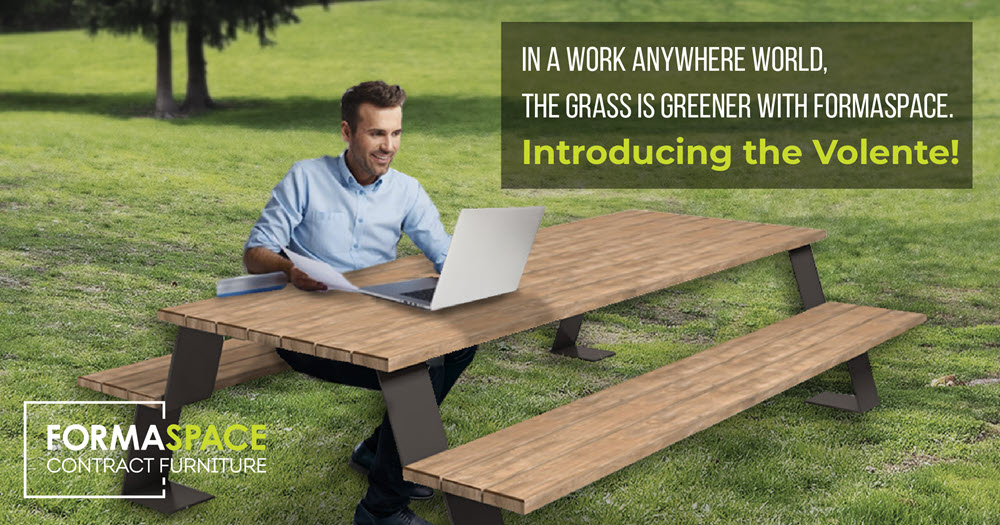
Architects and designers are taking notes. We expect to see more of these flexible workspaces (including casual lounge areas, indoor/outdoor patio spaces, or cafeterias) incorporated in future office designs as part of the effort to lure workers back to the office.
Trend 6: The Rise of “Deep Branding” as Companies Personalize their Work Environments with Custom Furniture to Elevate their Brand Experience
Savvy companies are taking now taking advantage of the emerging personalization trend (see # 2 above) in which younger workers (especially Gen Z) gravitate toward unique products that are different from what others have.
In response, there is a new trend toward “deep branding” in which architects and designers avoid generic “cookie-cutter” design elements all together in favor of fully bespoke office environments that reinforce the corporate brand image across all aspects of facilities design.
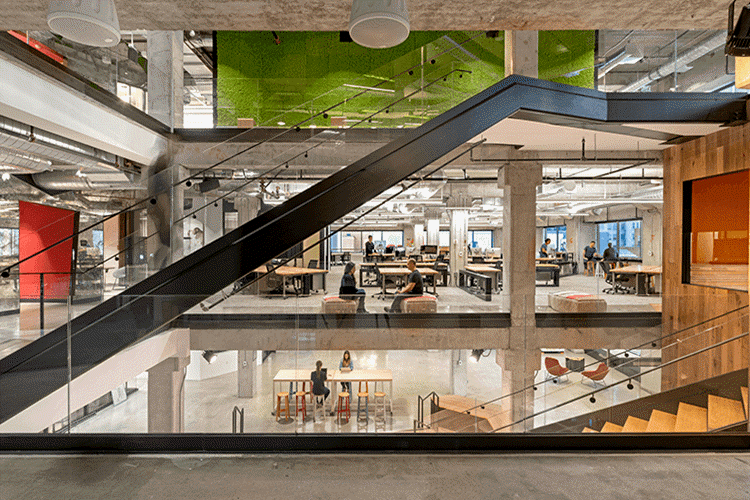
Custom furniture products are a key element of this trend; we are seeing increased demand for fully bespoke, one-of-a-kind furniture products that reflect unique corporate design philosophies.
Trend 7: High Demand by Gen Z Customers for Authenticity, Environmental Sustainability, and “Good Causes” help boost Preference for American-Made Furniture
Gen Z customers not only prefer personalized products, they are also more likely to consider other factors, such as product authenticity, environmental sustainability, as well as corporate ethics and support of “good causes,” when making a purchasing decision.
Architecture and design schools are increasingly focusing on ecological design in their academic programs. Shown above is a video from the Master in Advanced Ecological Buildings (MAEB) program offered by the IAAC in Spain, which explores many new sustainable building practices, such as creating a program to trace wood products back to the source.
Fortunately for Formaspace, we can tick many of these boxes, thanks to our years-long heritage as a manufacturer of custom industrial furniture, which gives credence to our heavy-duty furniture products that are designed to last for generations.
The fact that all our products are made-in-America helps as well, as we support the local crafts persons and suppliers who make the materials, such as steel, that go into our furniture products.
Trend 8: Furniture Manufacturers Importing Goods from China Find it’s Not Easy to retool their Operations to Make Personalized, Custom Furniture in High Volumes here in the USA
It’s no secret that most furniture sold in America is made overseas.
This practice of importing furniture has become more difficult over the last year, however.
As we discussed in a recent article, overseas shipping has become much more expensive, and overseas supply chains continue to suffer from serious delays due to repercussions from the Coronavirus pandemic.
Some home goods companies, such as e-commerce giant Wayfair, were already reducing their dependence on Chinese manufacturing by as much as 10% before the pandemic (primarily in response to the Trump administration’s tariffs on foreign steel).
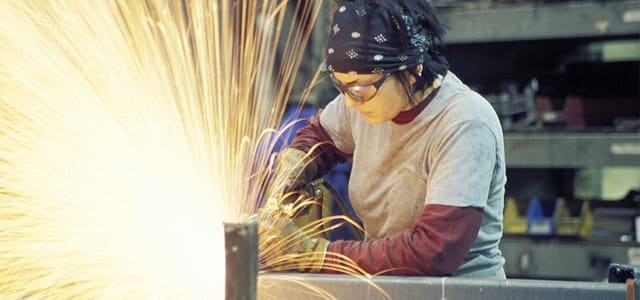
But a 10% shift is a drop in the bucket.
Indeed, it’s a difficult challenge for furniture companies to “step off the China train” and transition back to full-fledged American manufacturing.
Adding to the complexity is the need to create flexible manufacturing methods capable of supplying highly personalized (custom) furniture products that are currently in high demand.
Trend 9: Flexible, Modular, Mobile Furniture Solutions help “Future-Proof” Interior Environments
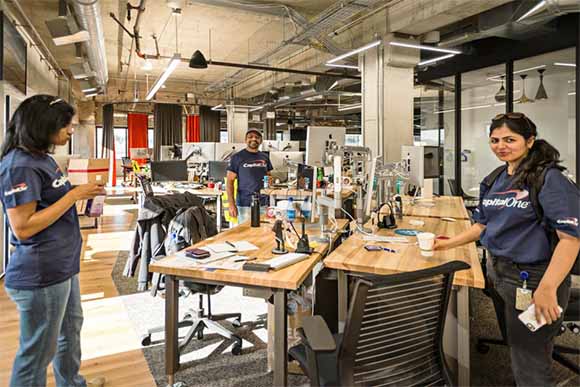
If there is one constant in life, it’s that things change over time.
And nothing illustrates this better than the impact of the Coronavirus pandemic over the past year.
Those who purchased Formaspace mobile and modular furniture found themselves in a more enviable position than most, however.
Modular and mobile furniture made adapting to new requirements, such as moving furniture further apart to comply with new social distancing rules, for example, relatively easy.
This is an important point to consider when making your next furniture investment.
Specifying modular and mobile furniture solutions are one of the best ways to “future proof” your facility by allowing you to reconfigure your furniture as needs change – even to relocate it to new facilities if required – without losing your initial investment.
Trend 10: Unique Furniture Designs solve Difficult Problems and Reduce the Need for Leasing Additional Space
Architects, designers, and facility planners are always facing new challenges.
One of the greatest new challenges that have arisen due to the Coronavirus pandemic is the need to space employees further apart in the office – without having to lease more floor space.
The solution often comes in the form of better space allocation for shared elements, such as storage.
For example, it might make more sense to transform a central supply room into additional space for workers and to create custom storage units fitted between each employee workstation.
In this scenario, the storage capacity can be the same (or larger) while providing additional distance between employees.

It’s always a good idea to walk through your facility with fresh eyes to look for opportunities to leverage custom furniture solutions to make better use of the space you have available.
In many cases, you can find opportunities to take advantage of overhead vertical space, unused space under workstations, or to combine multiple functions into one piece of multi-purpose furniture.
Formaspace is your Personalized Furniture Manufacturing Partner
If you can imagine it, we can build it, here at our factory headquarters in Austin, Texas.
Speak with your Formaspace Design Consultant today.
Find out why today’s leading companies, including Apple, Capital One, Dell Computer, Google, Oculus, Parabola, and Twitter, choose personalized furniture from Formaspace.






